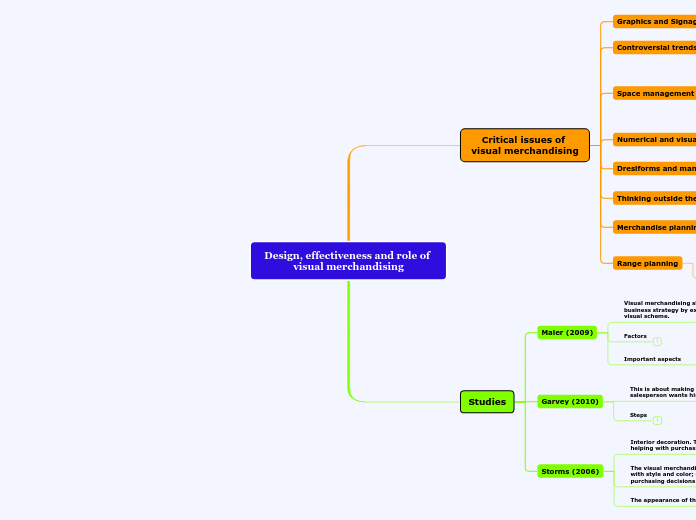Design, effectiveness and role of visual merchandising
Critical issues of visual merchandising
Graphics and Signage
Eye-catching yet clear graphics to visually communicate the brand.
Controversial trends and boards
they convey the source, the worthiness of the product to the consumer and the buyer.
Space management
Attention should be paid to the ceiling space. The space should be allocated to the available products according to the expectation of the customers.
Space management problems: How do we want our ranges to look?
Numerical and visual
Allows users to take into account the available space and calculate the proportions and yields of the space.
Dresiforms and mannequins
They communicate the three-dimensional shape of the product. A mannequin can be customized to communicate characters.
Thinking outside the box
Innovative ideas in mannequin display, samples, invite many more people to the booth.
Merchandise planning
It is a systematic approach whose objective is to maximize the return on investment, by planning sales and inventory in order to increase profitability
Range planning
The assortment plan is the goal of the merchandise plan and is divided into specific lines in such a way that the division results in an increase in the overall marginal mix.
Studies
Maier (2009)
Visual merchandising should be incorporated into one's business strategy by explaining the importance of a visual scheme.
Factors
Important aspects
identity of the shop window, first impressions, design of the store, promotional activity.
Garvey (2010)
This is about making the customer feel how the salesperson wants him to feel.
Steps
Storms (2006)
Interior decoration. The first look is also crucial in helping with purchasing decisions.
The visual merchandising aims to present the product with style and color; educates customers to make purchasing decisions quickly.
The appearance of the product focused on:
background colors, lighting, art pieces, flower pots.
